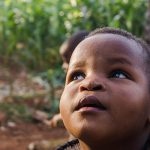
One benefit of using asset mapping is that it is an efficient instrument for the conception and understanding of the richness of faculty and resources that exists in a community. Asset mapping is important even in small communities with few members or of a community suffering from poverty and economic anguish (Beaulieu & Southern Rural Development Center, 2002).
One limitation of using asset mapping is that the efforts of analyzing community assets may not always be more effective in achieving desired results. That is to say community members (i.e. as potential community assets) may not always offer their time and talents to changes needed in the assessment process, limiting the effective of community asset mapping. Secondly, when assessments are not planned successfully on the strengths of the community, members may be unwilling to participate.
Specific example of when I might use asset mapping will be when conducting community health assessment of Ebola infection in a specific village (assuming the Gbarnga community), in Liberia or other part of west Africa, and need to find local assets to mobilize the community health problem. This example further enlightened the concept of asset mapping, as a data collection procedure to ascertain community health programs, in an environmental area— that can be compared to risk factors when initiating community health planning.






